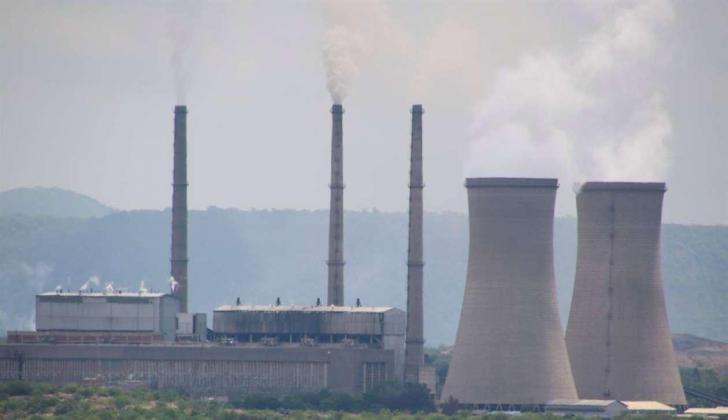News / National
9 power stations planned for Zimbabwe
29 Oct 2024 at 07:32hrs |
0 Views

Zimbabwe's energy sector is poised for a significant transformation next year, as nine new public and private power projects are expected to add 2,690 megawatts (MW) to the national grid. This increase in capacity is projected to reduce power outages, which have been exacerbated by the effects of the El-Niño-induced drought impacting generation at the Kariba South Hydro Power Station. The recent investments in energy infrastructure by the Second Republic, under President Mnangagwa's administration, aim to secure reliable electricity for the country's growing industrial and residential demands.
Dr. Sydney Gata, executive chairman of Zesa, outlined several ongoing initiatives over the weekend, confirming that these projects will enhance national capacity and contribute toward universal access to electricity. "We are increasing internal capacity. We promoted independent power producers, and they confirm an end to load-shedding by December 2025," Dr. Gata noted.
Major Power Projects on the Horizon
Among the leading projects in progress is the 800MW repowering of the Hwange Power Station, managed by Indian firm Jindal. Set for completion by December 2025, this project will restore the six older units at Hwange to optimal capacity. In addition to Hwange, eight other private power projects are under development, including:
- 720MW Titan Project in Hwange
- 300MW Zhong Jin Heli Project in Hwange
- 270MW ZZE Project in Hwange
- 200MW Jinan Project in Gweru
- 100MW Xintai Project in Beitbridge
- 100MW Afrochine Project in Chegutu
- 100MW Dingneng Solar Project in Manhize
- 100MW Dingneng Solar Project in Mamina
By adding these projects to the national grid by the end of 2025, Zimbabwe's dependable capacity will rise from 1,500MW to 4,190MW, a move anticipated to stabilize supply and phase out dependency on power imports.
Expanding Access and Supporting Key Sectors
Dr. Gata also highlighted efforts to connect nearly 500,000 households currently waiting for electricity access by the end of 2025. The expansion strategy includes micro-grid installations for off-grid communities, essential services such as healthcare, and educational institutions, with 9,700 schools and 1,400 health facilities set to receive solar-powered micro-grids.
The agricultural sector will also benefit from Zesa's strategy, with solar energy installations planned for the nation's 30,000 irrigation farms. This initiative aims to reduce reliance on the Zesa grid by enabling farmers to contribute surplus energy back to the utility, enhancing grid stability and supporting sustainable agriculture.
Energy Security and Modernization Goals
In alignment with the National Development Strategy 1, Zesa has committed to ending load-shedding by 2025. A dedicated team will oversee the energy security programme, which includes modernizing public street lighting in ten provincial capitals. The ultimate goal is full electrification by 2030, ensuring that all Zimbabwean citizens have reliable access to electricity.
Dr. Gata emphasized that Zesa's approach to energy security is designed to be sustainable. "Our strategic response is very detailed and comprehensive. When the stability is restored, in my opinion, it is almost forever," he said.
With the combined efforts of public and private partnerships, Zimbabwe is positioned for a future of stable, widespread energy access that will underpin industrial growth and improve the quality of life for millions across the nation.
Dr. Sydney Gata, executive chairman of Zesa, outlined several ongoing initiatives over the weekend, confirming that these projects will enhance national capacity and contribute toward universal access to electricity. "We are increasing internal capacity. We promoted independent power producers, and they confirm an end to load-shedding by December 2025," Dr. Gata noted.
Major Power Projects on the Horizon
Among the leading projects in progress is the 800MW repowering of the Hwange Power Station, managed by Indian firm Jindal. Set for completion by December 2025, this project will restore the six older units at Hwange to optimal capacity. In addition to Hwange, eight other private power projects are under development, including:
- 720MW Titan Project in Hwange
- 300MW Zhong Jin Heli Project in Hwange
- 270MW ZZE Project in Hwange
- 200MW Jinan Project in Gweru
- 100MW Xintai Project in Beitbridge
- 100MW Afrochine Project in Chegutu
- 100MW Dingneng Solar Project in Manhize
- 100MW Dingneng Solar Project in Mamina
By adding these projects to the national grid by the end of 2025, Zimbabwe's dependable capacity will rise from 1,500MW to 4,190MW, a move anticipated to stabilize supply and phase out dependency on power imports.
Expanding Access and Supporting Key Sectors
The agricultural sector will also benefit from Zesa's strategy, with solar energy installations planned for the nation's 30,000 irrigation farms. This initiative aims to reduce reliance on the Zesa grid by enabling farmers to contribute surplus energy back to the utility, enhancing grid stability and supporting sustainable agriculture.
Energy Security and Modernization Goals
In alignment with the National Development Strategy 1, Zesa has committed to ending load-shedding by 2025. A dedicated team will oversee the energy security programme, which includes modernizing public street lighting in ten provincial capitals. The ultimate goal is full electrification by 2030, ensuring that all Zimbabwean citizens have reliable access to electricity.
Dr. Gata emphasized that Zesa's approach to energy security is designed to be sustainable. "Our strategic response is very detailed and comprehensive. When the stability is restored, in my opinion, it is almost forever," he said.
With the combined efforts of public and private partnerships, Zimbabwe is positioned for a future of stable, widespread energy access that will underpin industrial growth and improve the quality of life for millions across the nation.
Source - The Herald
Join the discussion
Loading comments…












